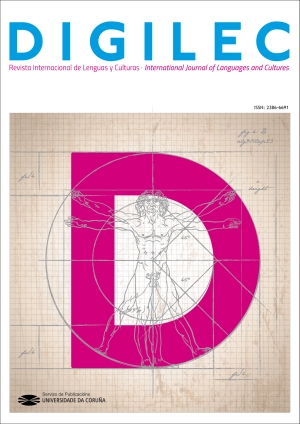Foreign Language Learning: A study about pre-teachers' perceptions in Primary School
Main Article Content
Abstract
This study focuses on the learning of foreign languages. It is aimed at: 1. Finding out if the number of foreign languages that the respondents dominate influences what they believe about the degree of learning difficulty of the first Foreign Language (FL1) in Primary Education, 2. Knowing the beliefs of the participants about whether the difficulty of learning the first Foreign Language (FL1) is related to the difficulty of learning the second Foreign Language (FL2), and 3. To get to know the perception of the participants about the use of translanguaging as a useful tool to reinforce the learning of a Foreign Language. To do this, a quantitative methodology was applied, and a survey was designed to be completed by 69 monolingual, bilingual and multilingual anonymous and volunteer graduates’ pre-teachers. Results show that (i) the number of foreign languages they control does not influence their beliefs, (ii) the belief they have about the learning difficulty of FL1 in relation to the learning difficulty of FL2 has a correlation between both, and (iii) they perceive translanguaging as a valuable instrument for learning a foreign language. Conclusions suggest that the answers are based on what has been learned instead of being based on personal experiences, and that the use of translanguaging is considered useful when learning is intended for understanding contents and for good communication purposes.
Keywords:
Downloads
Article Details
References
Asún, R. A., Rdz-Navarro, K., & Alvarado, J. M. (2016). Developing multidimensional likert scales using item factor analysis: The case of four-point items. Sociological Methods & Research, 45(1), 109–133. https://doi.org/10.1177/0049124114566716
Bobadilla-Pérez, M. y Couto-Cantero, P. (2015). Development and implementation of plurilingual/bilingual projects in preschool and primary schools. INTED2015 Proceedings, 7448-7458 Madrid: IATED. https://bit.ly/3xcFLmG
Cenoz, J. (2019). Translanguaging pedagogies and English as a lingua franca. Language Teaching, 52(1), 71-85.
Council of Europe (2001). Common European Framework of Reference for Languages: Learning, Teaching, Assessment. Cambridge: Cambridge University Press. https://bit.ly/3xhhLPf
Council of Europe (2018). Common European framework of reference for languages: learning, teaching, assessment. Companion Volume with new Descriptors. Estrasburgo: Council of Europe Publishing. https://bit.ly/3cA6AJG
Couto-Cantero, P., & Bobadilla-Pérez, M. (2018). Ten Fundamentals for Novice CLIL Teachers. E-TEALS: An e-journal of Teacher Education and Applied Language Studies, 9 (special edition), 108–131. https://doi.org/10.2478/eteals-2018-0015
Coyle, D., Hood, P., & Marsh, D. (2010). CLIL: Content and Language Integrated Learning. Cambridge University Press.
García, O., y Kleyn, T. (Eds.). (2016). Translanguaging with multilingual students: Learning from classroom moments. Londres: Routledge.
Gerena, L. y Ramírez-Verdugo, M. D. (2014). Analyzing Bilingual Teaching and Learning in Madrid, Spain: A Fulbright Scholar Collaborative Research Project. Gist Education and Learning Research Journal, 8, 118–136.
Ferjan Ramírez, N., Ramírez, R. R., Clarke, M., Taulu, S., Kuhl, P. K. (2017). Speech discrimination in 11‐month‐old bilingual and monolingual infants: a magnetoencephalography study. Developmental Science, 20(1), e12427.
Lenneberg, E. H. (1967). Biological foundations of language. Wiley.
Ley Orgánica 8/2013, de 9 de diciembre, para la mejora de la calidad educativa. https://bit.ly/3kice8a
Li, W. (2010). The Nature of Linguistic Norms and Their Relevance to Multilingual Development. M. Cruz-Ferreira (ed.). Multilingual Norms, 397- 404. Peter Lang.
Lopes, A. y Ruiz Cecilia, R. (2018). New Trends in Foreign Language Teaching: Methods, Evaluation and Innovation. Cambridge Scholars Publishing.
López Peinado, M. (2017). Estudio Longitudinal del Programa de Enseñanza Bilingüe CBM en un Centro Docente de Educación Primaria de la Región de Murcia [Tesis doctoral, Universidad de Murcia]. Repositorio Institucional de la Universidad de Murcia. http://hdl.handle.net/10201/56291
Nacamulli, M. (2015). The benefits of a bilingual brain. TED. https://www.ted.com/talks/mia_nacamulli_the_benefits_of_a_bilingual_brain/transcript
Orden de 12 de mayo de 2011 por la que se regulan los centros plurilingües en la Comunidad Autónoma de Galicia y se establece el procedimiento de incorporación de nuevos centros a la Red de Centros Plurilingües de Galicia (DOG nº 97, 20 de mayo de 2011).
Otheguy, R., García, O. y Reid, W. (2015). Clarifying Translanguaging and Deconstructing Named Languages: A Perspective from Linguistics. Applied Linguistics Review 6(3), 281–307.
Otheguy, R., García, O. y Reid, W. (2018). A Translanguaging View of the Linguistic System of Bilinguals. Applied Linguistics Review 10(4), 625-651.
Penfield, W., y Roberts, L. (1959). Speech and brain mechanisms. Atheneum.
Pinker, S. (1994). The language instinct: How the mind creates language. Morrow.
Torres Águila, J. R. (2005). El mito del período crítico para el aprendizaje de la pronunciación de un idioma extranjero. Phonica, 1,1-9. https://doi.org/10.1344/phonica.2005.1.%25p


